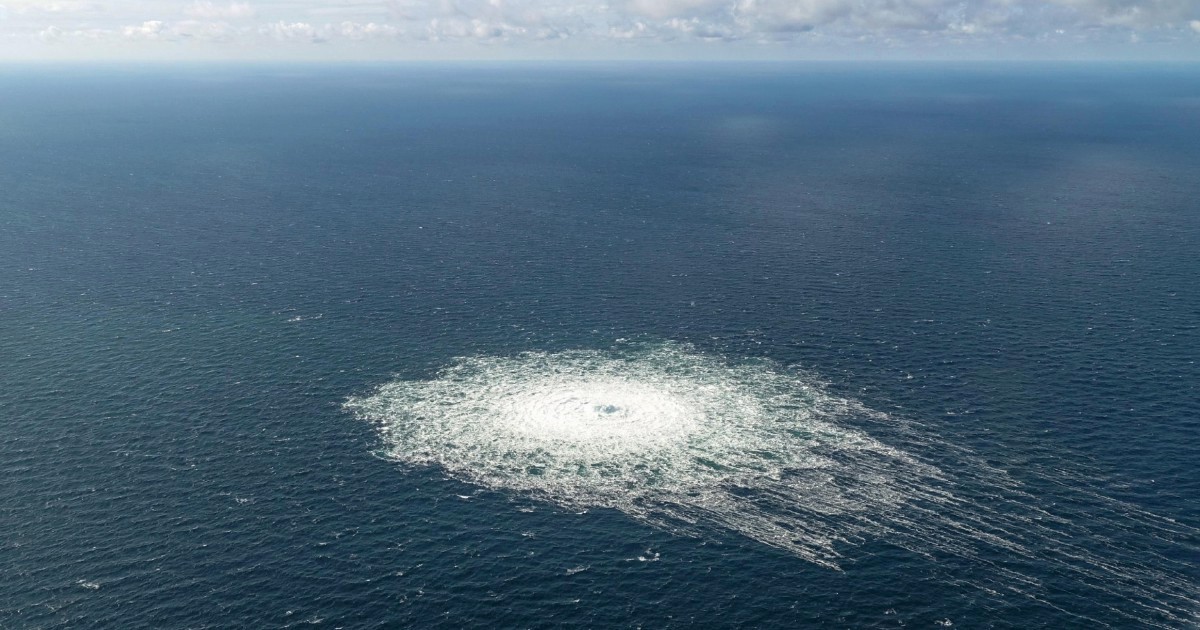The mystery of the sabotage of the Nord Stream 1 and 2 gas pipeline in the Baltic Sea is still to be solved. The same work of the US journalist Seymour Hershconvinced that the underwater pipelines were blown up by US diversdoes not seem to stand up to the test of facts. Hersh’s controversial reconstruction claims that the divers were brought to the site of the explosions by a Norwegian minesweeper of the “High” class during a manoeuvre NATO, while the trigger would therefore have taken place from a buoy with sonar released by a reconnaissance aircraft. But precisely the details of his reconstruction seem to shatter in the face of verification, as he reconstructed from Pascal Siggelkow for the German broadcaster ARD.
No deminers – The spokesman of the Norwegian forces lieutenant colonel Norstad Finberg told the German network that there were no “High” category ships near the site of the explosions during the NATO BALTOPS maneuver underway between 5 and 17 June 2022. The Danish analyst Oliver Alexanderwhich retraced the movements of the Norwegian navy ships during the manoeuvres, confirmed that the two “Alta” class vessels still active at that time were very far from the Danish island of Bornholm, near which there were explosions and a third was under maintenance. The only Norwegian minesweeper sailing in the Baltic during BALTOPS was the KNM Hinnøy which belongs to the “Oksøy” class, but also in this case the Norwegian navy has excluded that it has ever been in the area. With the help of data obtained with Open Source Intelligence (OSINT) Alexander indicated that he was never closer than about 8.6 nautical miles (16 kilometers) from the site of the explosions. It should have taken him 62 minutes to reach it, to which must be added the diving time. The satellite data show no discontinuities to suggest that the vessel has temporarily withheld its GPS position. In addition she was in formation with three other NATO and one non-NATO warships (the Finnish MHC Purunpää). Also Joe Galvinan Irish editor expert in the use of OSINT, debunks Hersh by publishing the ship tracks in tweets dated February 9 which were later re-proposed by the ARD.
Invisible decompression chamber – As ARD’s Siggelkow recalls, Hersh told TASS that the Norwegian vessel was equipped with a decompression chamber prepared by CIA. But videos of the boats that took part in the maneuvers, finally recorded as they entered the port of Kiel, show that no vessel, let alone the Hinnøy, was equipped with such equipment.
The placement of the charges is unlikely – Even on the details of the explosions, Hersh’s reconstruction is not without inconsistencies: divers would have placed C4 in the form of so-called “shear or hollow charges”. However, only three of the pipeline’s four pipelines show compatible damage and none of the available images show similar charges have come into play. In. in particular, the cutting charges they would have to be placed radially on the pipes requiring a lot of work and time; hollow charges instead they involve destruction, but they are not enough to push the pipes towards the seabed, nor are 200 or 300 kilos of explosives necessary, an amount which instead would seem to be confirmed by the seismographic records. David Domjahnresponsible for teaching explosion technology at the Karlsruhe Institute for Technology (KIT), spoke to the ARD and suggested the use of bottom-anchored mines released from a ship, rather than charges of 300 or 400 kilos of C4 for each explosion and applied by divers and secured against currents. It must be said, however, that without a forensic examination the damaged pipes are for now mere speculation.
No Norwegian reconnaissance aircraft – Hersh finally claimed that a Norwegian P-8 reconnaissance aircraft would have dropped a good with echogoniometer capable of triggering detonations. The P-8 Poseidon However, Lieutenant Colonel Finberg told the ARD, it has never been operational and has only made test flights in the national airspace. The flight data confirms, reports Siggelkow, that it only carried out test flights in September 2022 and none in the area of the explosions. A press release from the Norwegian Armed Forces dated February 2022, he adds, announced that from early 2023 the P-8 would be replaced by the reconnaissance aircraft P-3 Orion nor was this one on September 26 on the Baltic. Flight data would show a US Navy P-8 reconnaissance aircraft over the Baltic Sea, but only 90 minutes after the first explosion, Galvin quotes. The use of OSINT, he concludes, does not exclude an undercover operation to blow up the pipelines, but no data matches with what Hersh described.
